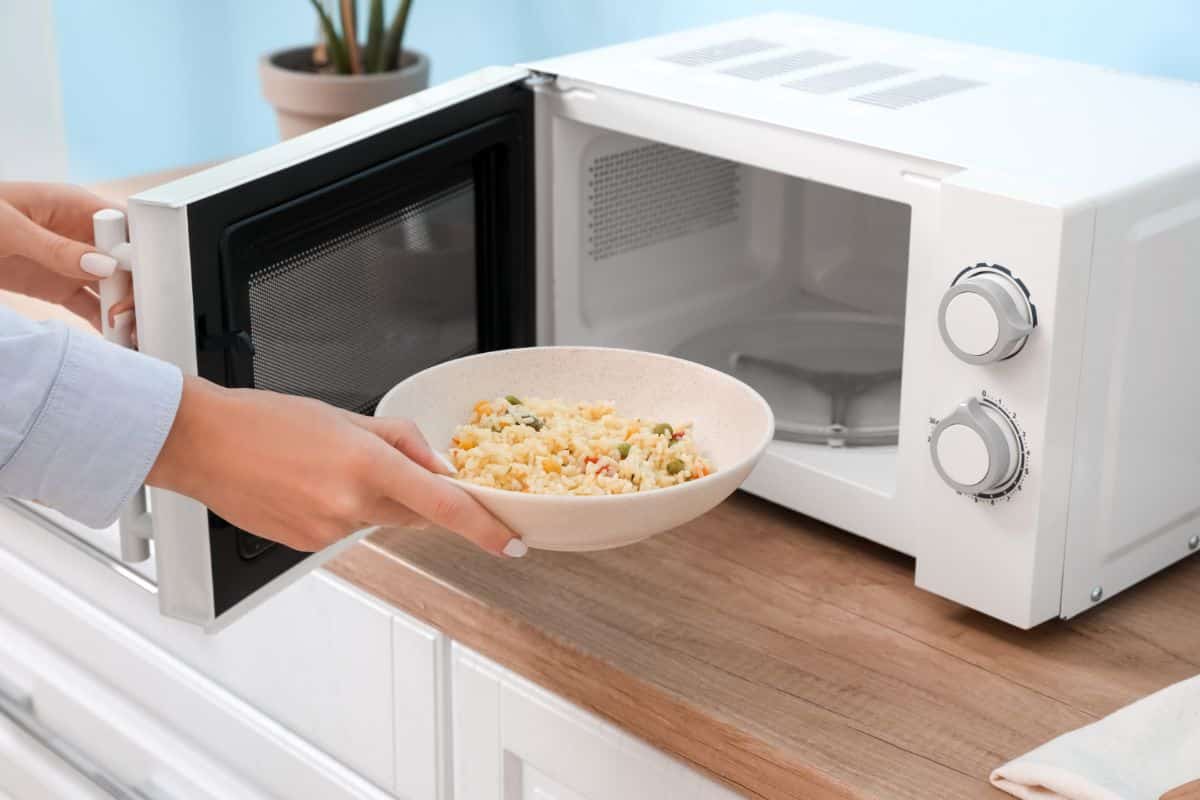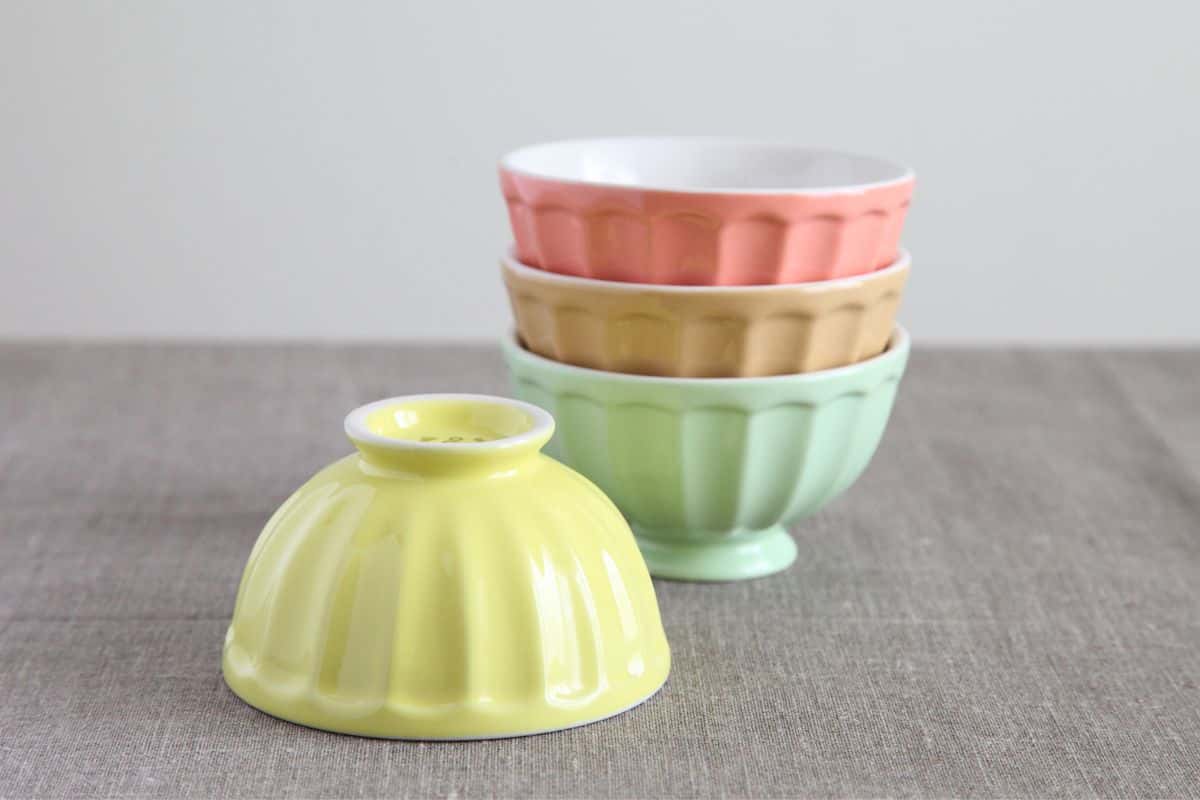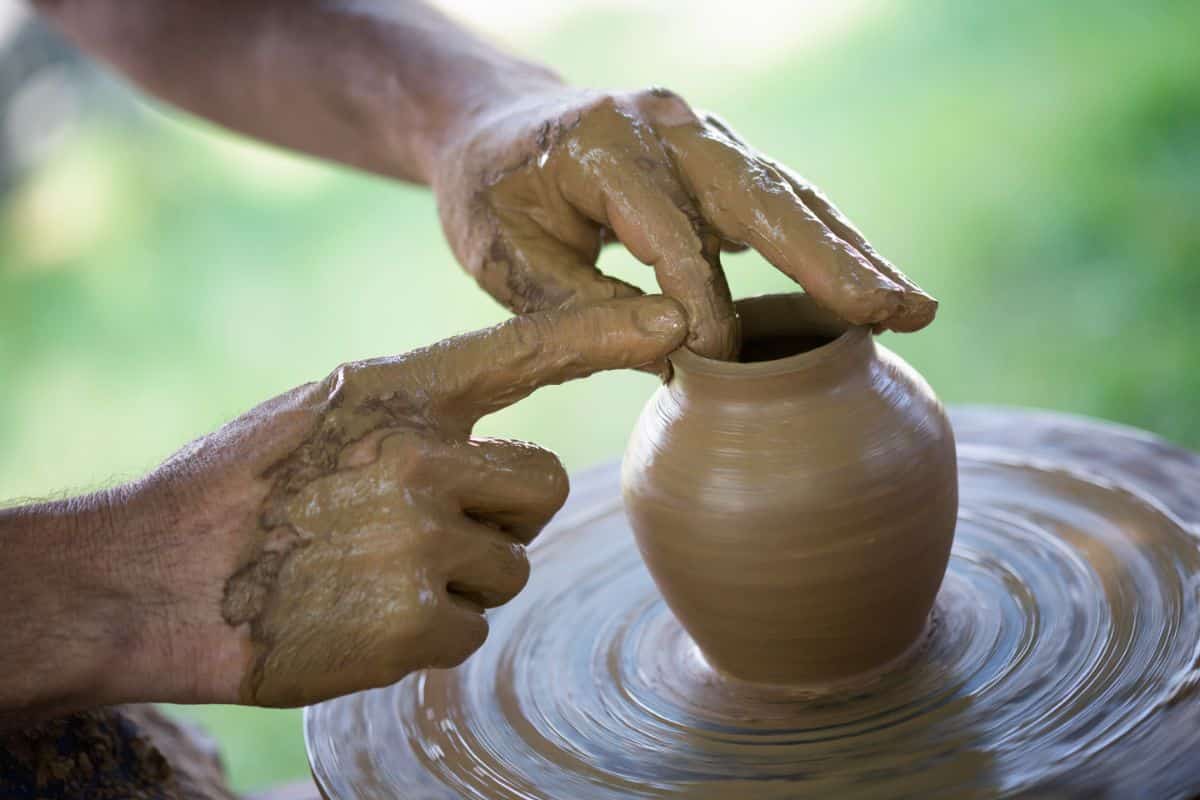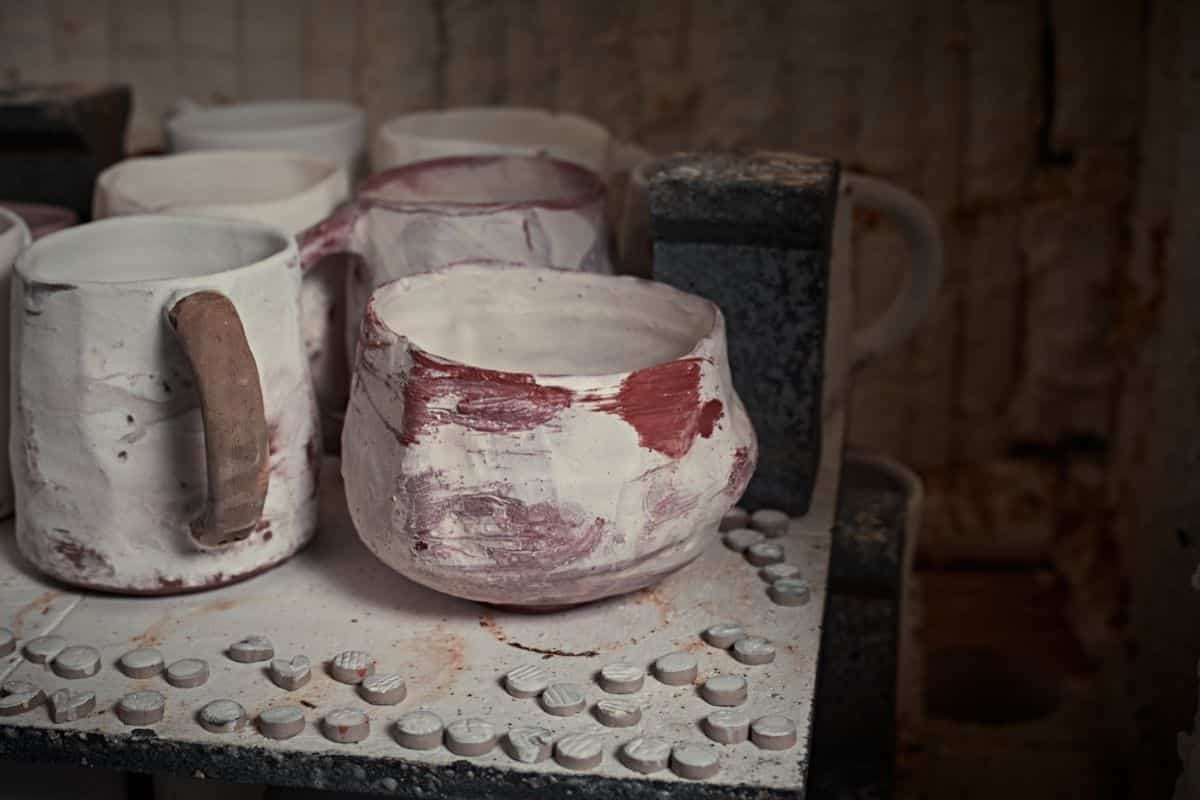Is ceramic kitchenware microwave safe? This is a frequently asked question. There are two answers: yes and no. Yes, most ceramic kitchenware is safe to use in a microwave oven.
As a matter of fact, ceramic is one of the most heat resistant materials available today.
Do you know what types of materials you are allowed to put in your microwave?
Certain types of ceramics can be quite dangerous in the microwave because they are unable to withstand the radiation and might also absorb water and heat up really fast.

This guide will help you understand ways to avoid harming yourself and the equipment in your kitchen which might cost a lot of money.
Modern ceramics have been made to be able to withstand the heat of a microwave but it will always say on the packaging whether it is microwave safe or not.
It all depends on different factors concerning how it was molded.
You always need to be double checking the packaging because even though most modern ceramics are made for microwaves, not all of them will be.
What Ceramics Are Microwave Safe?
This topic is focusing on the kitchenware made out of ceramics instead of the ornaments and sculptures which are more artistic styles.
There are several different types of clay that ceramics are made out of. The types of ceramic which are more refined and made from hotter temperatures tend to work better in a microwave because the materials are more durable.
However, the clay which has more plastic materials don’t tend to last as well because they are fired at lower temperatures meaning they can be more delicate in the microwave and will be less durable in that environment.
What Are The Differences?
There are two main reasons for why certain materials are less durable in the microwave in comparison to others.
The less durable materials tend to absorb more water inside of them or they are unable to handle the radiation from the microwave which allows the heat in more and the material will just get hotter and hotter which can be quite dangerous if it were to set on fire!
The energy which is produced in a microwave can have huge effects on some materials which are unable to handle the radiation which is why the kitchenware needs to be almost transparent to the radiation.
If it is not, the dish will heat up very fast and could be a hazard to you if you were to burn yourself when trying to take it out of the microwave.
There is also the hazard of damaging your microwave because the dish could explode or catch fire in some cases which can also be a huge problem.
There is also the previously mentioned water absorbent issue.
If the dish is porous, this means it will start to absorb the water in the microwave slowly and those water molecules will be inside of the cavities in the dish that will start to heat up.
Due to there being nowhere for the steam to escape from in the microwave, this can cause the dish to either explode from all of the pressure or it could crack and then it will be damaged.
Why Can Some Ceramic Materials Be Dangerous In A Microwave?
There is also the factor of having any metal around the dish which would be quite damaging to your microwave.
If you were to put this dish in your microwave, the metal material would arc that could cause the damages.
You also need to look at how this dish was made, whether it was in a factory or if it was handmade, maybe you got it as a gift.
If it was handmade, you need to be careful of how it has been layered and whether it was done evenly.
If the clay was not evened out before drying, this will also have uneven heating which can cause cracking in the dish when placed in the microwave.
A really important note that you need to be checking for is how old the clay ceramic is.
This is because if it is quite an old piece, there could be the issue of having lead inside of the clay or other toxins that could seep out into the food you are cooking.
This is very hazardous for you and should be avoided. This can be avoided by only using these types of dishes on display to avoid any harm to you and others.
If you have a delicate dish with soft joints or seams this could also be an issue because they are more likely to break when the head is applied to them in the microwave.
This can lead to it cracking and exploding.
What Is The Result Of Putting Unstable Ceramics In The Microwave?

The main issue would really be damaging your microwave because they are now cheap nowadays. You run the risk of the dish exploding or cracking and damaging that too.
Therefore, you don’t want to be cleaning up lots of mess from your microwave and possibly breaking it too which is why you need to avoid putting these types of ceramics in the microwave.
You also need to avoid hurting yourself or others who may touch the dish when it comes out of the microwave.
It is very likely that this type of material will get extremely hot and will burn you if you try to pull it out without any gloves.
The microwave catching fire is one of the biggest hazards there are because it can lead to more serious effects if it caught onto more objects in your kitchen.
This would then become an issue for your safety and your whole home if not posted immediately.
However, it can all be avoided by just reading the label or researching whether you are able to put it in the microwave, don’t guess.
Can Some Be Oven Safe But Not Microwave Safe?
The two types of machinery are completely different from one another. This is because they work in different ways.
The dishes that go in the oven are made to be able to withstand varying temperatures which will go up and down.
However, a microwave is all about withstanding the radiation which some materials cannot.
Most kitchenware that is made today is purposely made to be able to withstand the microwave because most people use the microwave on a daily basis and it has become the most popular way of cooking for some people.
Are You Able To Test Your Ceramic Dish?
If you are slightly unsure and it does not say on the packaging, there is a simple way you are able to test whether your ceramic dish is able to go in the microwave.
You need to set your microwave on full power and fill your dish up with water and microwave for one minute.
If the dish has heated up all over the dish then it should not be put in the microwave because it is not meant to heat up.
Conclusion
Overall, you really need to think about what you are putting inside of your microwave because not all materials are suitable for the radiation.
This is probably not something you have thought about before, but it is incredibly important for your safety and others in your home.
You do not want to put yourself at risk of burning yourself or your family if the microwave was to be set on fire because of using the wrong microwavable material.
Hopefully this guide has helped you understand the reasons why all ceramic kitchenware might not be suitable for the microwave.
There are several properties to certain types of ceramics which are either water absorbent or will explode with a buildup of heat.
There is also the issue of having older types of ceramic dishes which can release toxins into your food which can also be extremely dangerous for your health if continued over long periods of time.
Therefore, it is always handy to just check the label on the box before you start using it or do a bit of research about that specific piece of kitchenware to make sure you can use it before doing it.
Frequently Asked Questions
Is Ceramic A Good Cookware?
So, should you buy ceramic cookware? If you’re in the market for new cookware like me, definitely check out ceramic-coated options.
These pots and pans perform exceptionally well: They heat quickly, distribute heat evenly, are versatile (hello, stovetop-to-oven cooking) and are easy to clean.
What Is Ceramic Kitchenware?
Ceramic cookware is also used for baking and roasting. Most people prefer ceramic cookware because these utensils can be used for dry and wet cooking.
Additionally, they are non-sticky and prevent the burning of food. After use, they can be cleaned easily. Let us take a look at some of its advantages.








